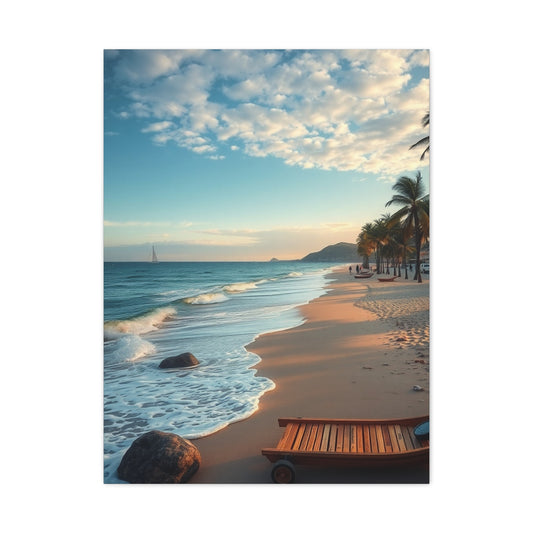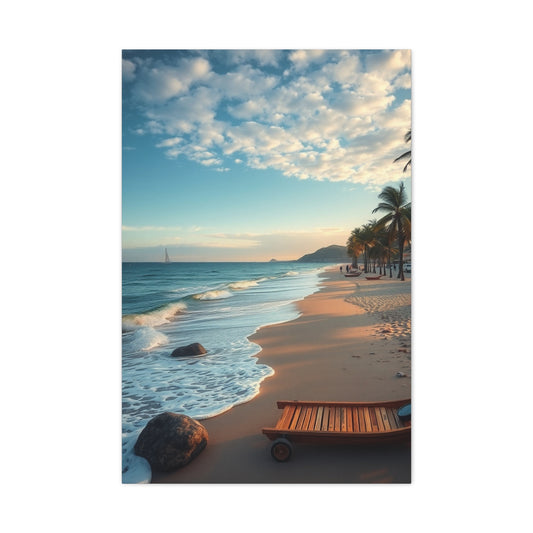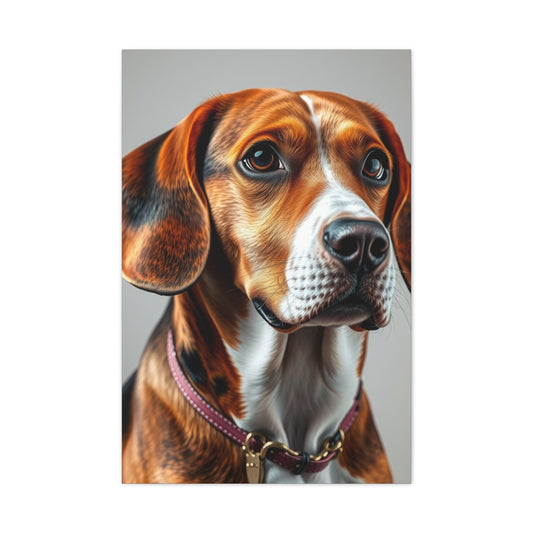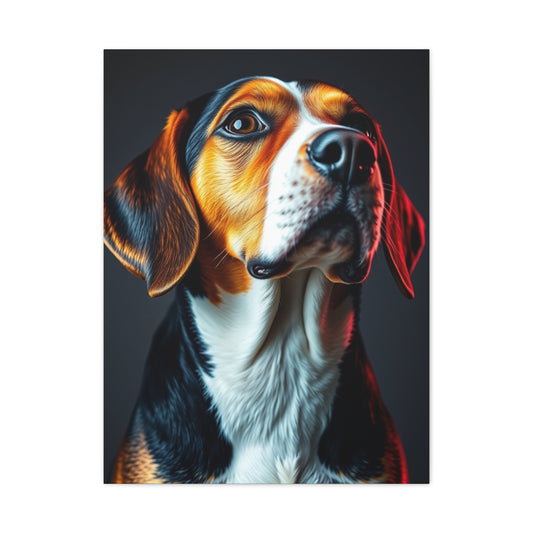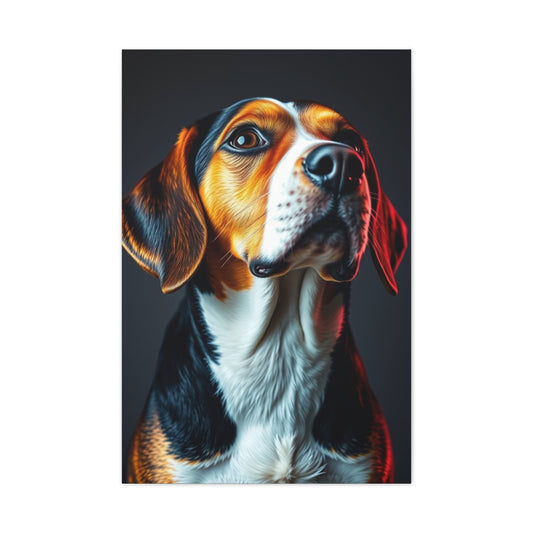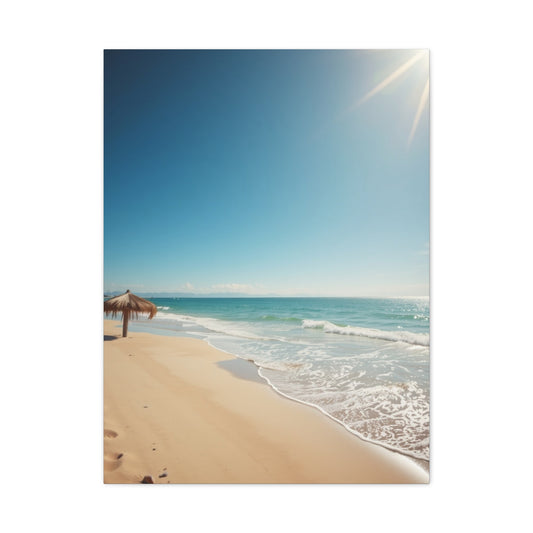Oversized wall art has the remarkable ability to redefine the ambiance of a room, turning blank expenses into captivating visual narratives. Whether you're curating a modern urban loft, a rustic cottage, or a contemporary family home, large-scale artwork brings a sophisticated flair that instantly elevates your interiors.
For many, discovering awe-inspiring gallery walls or dramatic installations online triggers the desire to replicate such grandeur. Contrary to popular belief, you don't need an expansive estate or a lavish budget to indulge in this décor trend. With the right eye for design and thoughtful placement, even modest spaces can harness the impactful charm of oversized art.
Elevate Your Interiors Instantly with Bold Artwork
When planning a redesign or simply refreshing a space, few decorative strategies are as visually rewarding as integrating large-format wall art. These expressive pieces transcend their aesthetic role and become architectural features that shape how a room is perceived.
Large wall art, whether in the form of stretched canvas or framed prints, creates immediate cohesion by unifying disparate design elements. It provides rhythm to your interiors, acting as both an anchor and a visual compass that leads the eye around the room. The size alone allows these pieces to convey scale, storytelling, and spatial harmony, often achieving the same dramatic effect as architectural enhancements.
Thanks to accessible production techniques, high-quality large artwork is available at approachable prices. It’s now easier than ever to introduce a grand sense of style without indulging in costly original works.
Why Oversized Art Creates Lasting Impressions
Oversized artwork has an almost magnetic allure. Its sheer scale commands attention, instantly turning even an understated image into a commanding presence. Whether the subject matter is abstract, minimal, photographic, or illustrative, the magnitude transforms how the viewer interacts with the piece.
These art installations go beyond mere visuals—they evoke emotions, instill atmosphere, and contribute to a space's identity. For open-concept interiors, large wall art plays a key role in defining zones and creating spatial boundaries without physical dividers. In more compact areas, the placement of a single statement piece can draw the gaze upward or inward, redirecting focus and making the room feel more generous in scale.
Large art also introduces narrative and personal expression into a space, enabling homeowners to project identity and values through a singular design element.
Match Your Artwork with Your Interior Style
One of the most exceptional advantages of oversized wall art is its innate versatility across diverse interior design aesthetics. Regardless of whether your decor embodies Scandinavian minimalism, industrial grit, mid-century modern elegance, coastal calm, or eclectic maximalism, there is a form of large-scale artwork that can seamlessly assimilate into your environment and amplify its character.
Oversized art acts as a bridge between architecture and emotion. In spaces defined by clean lines and subdued hues—such as minimalist or Japandi-style interiors—consider selecting art that echoes that restraint. Choose pieces with neutral tones, soft gradients, or abstract compositions that allow the space to breathe while still injecting visual interest. The simplicity of these designs often emphasizes negative space and architectural geometry, creating an atmosphere of calm and contemplation.
On the opposite end of the spectrum, maximalist, boho, or globally inspired interiors benefit immensely from large-scale artwork that brims with intricacy and storytelling. Richly layered designs—whether collage, mixed media, or surrealistic interpretations—bring vitality and depth to the room. They engage the viewer with vivid color palettes, symbolic imagery, and complex textures that feel immersive and emotionally charged.
For interiors anchored by neutral palettes, oversized art can serve as a chromatic catalyst. A burst of vermilion, emerald, or cobalt on an otherwise muted wall infuses the space with dynamism and warmth. This deliberate use of contrast creates a sense of visual choreography, directing the eye and breaking the monotony without disrupting cohesion.
In rooms where color is already prevalent through upholstery, wallpaper, or accessories, a large monochrome artwork or minimalist photograph can provide a much-needed pause—a restful focal point that grounds the design and balances sensory input. This thoughtful interplay between intensity and restraint cultivates a layered aesthetic that feels both sophisticated and personal.
|
Related Catagories: |
|
Jennifer Paxton Parker Wall Art Canvas Photo Prints
|
Furthermore, style alignment is crucial when integrating large art into curated interiors. For rustic or farmhouse-inspired homes, oversized landscapes, pastoral scenes, or vintage botanical illustrations framed in reclaimed wood can underscore the organic, grounded essence of the design. In contrast, urban industrial spaces—characterized by exposed materials and raw finishes—might lean toward black-and-white architectural photography, metallic accents, or geometric abstractions on stretched canvas.
Ultimately, when your chosen artwork resonates with your existing design scheme, the result is a harmonious dialogue between form, function, and feeling. It doesn’t merely decorate the space—it elevates it. The wall art appears intentional, like a natural extension of the environment rather than an afterthought. In this way, the artwork becomes an intrinsic part of your home's identity, enhancing not only its visual narrative but its emotional resonance.
Make an Impact with One Statement Piece
In a world increasingly saturated with visual clutter, the use of a single, substantial art piece offers a refreshing design philosophy: intentional minimalism with maximum impact. A solo, large-scale canvas or framed artwork provides a clean, cohesive visual experience that commands attention without competing for it. It’s a design statement that exudes confidence and clarity.
This approach is especially powerful in modern interiors where simplicity is paramount. In such spaces, a solitary artwork becomes the hero of the room—bold yet balanced, expressive yet composed. Placing an oversized piece above a major focal point like a sofa, headboard, or console table establishes a visual anchor. It not only creates proportion and symmetry but also draws the eye upward, enhancing the sense of verticality and airiness.
In more eclectic or richly decorated interiors, a singular large piece can serve as a counterbalance to ornate details, layered textures, and vibrant accents. It introduces a structured element that offers relief from visual noise and creates a point of visual meditation amidst the maximalism. This juxtaposition adds sophistication to the room by creating an intentional rhythm between design elements.
The subject of the artwork is also crucial to its emotional impact. A sweeping landscape can instill serenity, transporting the viewer into a tranquil horizon. An emotive portrait, with intense gaze and painterly brushwork, evokes introspection. A geometric abstraction, pulsing with rhythmic patterns and bold hues, adds energy and structure. Each option can evoke different moods and energies, offering not just visual stimulation but an immersive experience that resonates with your personality and purpose.
Moreover, using one large artwork rather than a series of smaller pieces helps avoid the common mistake of over-decorating. It maintains clarity and coherence, which is particularly important in smaller spaces or rooms with architectural quirks. A single oversized piece adapts more fluidly to a range of wall sizes and shapes, whether tall and narrow or wide and expansive.
This focused approach to décor encourages mindfulness in curation and invites viewers to linger longer on the artwork. It cultivates a space where less truly becomes more, where a single image can tell a richer story than a cluttered collage of competing visuals.
Add Dimension with a Multi-Panel Display
For those seeking visual intrigue and architectural fluidity, multi-panel wall art—especially diptychs and triptychs—presents an elegant solution. This approach divides a single composition into two or more coordinated sections, offering continuity with subtle interruptions that create rhythm and depth. The design isn't just about the artwork itself; it’s about how the eye travels from one section to the next, adding a kinetic quality to otherwise static imagery.
These segmented displays are particularly well-suited for wide, linear spaces such as the expanse behind a sectional sofa, above a formal dining table, or stretching across a long hallway. They create the illusion of movement across the wall, drawing the observer into a visual journey. The negative space between panels offers breathing room, a contemporary twist that lightens the overall effect and prevents visual heaviness.
A triptych featuring atmospheric abstract forms can animate a modern loft with soft gradients and layered transparencies. Alternatively, a high-resolution panoramic photograph split into three parts—perhaps capturing a desert vista, a city skyline, or a fog-covered forest—can envelop the viewer in a cinematic scene, evoking wanderlust and tranquility in equal measure.
The modular nature of panel-based artwork also introduces practical advantages. The segmentation allows for easier handling during installation and the opportunity to experiment with spacing. You can adjust the distance between panels to suit the proportions of the wall or the scale of the furniture beneath. This flexibility makes it easier to align the artwork with architectural features like beams, windows, or built-in cabinetry.
From a stylistic standpoint, multi-panel displays adapt beautifully to various design languages. In contemporary homes, crisp lines and symmetrical layouts maintain harmony and sleekness. In bohemian or globally inspired rooms, asymmetrical spacing and organic imagery contribute to a more relaxed, exploratory mood.
The triptych or diptych format also lends itself well to personalization. You might choose to divide a meaningful photograph from your travels, a family portrait, or an abstract work you've created yourself. Doing so transforms the artwork into a truly one-of-a-kind visual narrative that not only enhances your walls but tells your story.
In the end, the allure of multi-panel displays lies in their ability to merge artistry with architecture. They add a sculptural quality to the wall, offering both visual and spatial dimension. Whether minimalist or elaborate, tranquil or vivid, these compositions enrich the home with both structure and soul.
How to Choose the Perfect Large Art for Your Room
Selecting the ideal oversized wall art for your space requires a blend of artistic sensibility and design precision. It’s not just about what looks attractive on a screen or showroom wall—it’s about understanding scale, emotional impact, cohesion, and the visual language of your home. Art is deeply personal, and when chosen carefully, it transcends mere decoration to become a defining feature that shapes your environment.
The process begins with proportion. Consider the wall you’re working with: its height, width, and visual prominence in the room. A towering canvas can overwhelm a low-ceilinged space, while a small piece might get lost on a grand expanse. Ideally, the artwork should fill between 60% to 75% of the wall space it’s intended for, striking a balance between presence and elegance. This proportion ensures that the piece stands out without overpowering the room’s architectural elements.
Before you commit, visualize the piece in context. Use masking tape or paper cutouts to simulate the scale of the artwork on your wall. Alternatively, design software or mobile applications can help render digital mock-ups, providing a realistic sense of how the piece will interact with furniture, lighting, and adjacent decor.
Equally important is the emotional tone you want the artwork to convey. Art isn’t just visual—it’s emotive. It has the power to alter moods and influence how a room is experienced. If you’re designing a peaceful retreat, choose artwork that evokes tranquility—think misty landscapes, oceanic blues, or botanical sketches. For a space meant to energize and invigorate, consider bold abstracts, expressive brushwork, or art that incorporates kinetic lines and vibrant tones.
When choosing, also think about resonance. Does the subject matter speak to you on a deeper level? Art that reflects your experiences, dreams, or values will always have more staying power in your home than something chosen purely for trend.
Now, turn your attention to harmony. Examine your room’s existing palette, material finishes, and furniture lines. A high-contrast piece can be striking in a monochromatic space, but in a room already teeming with pattern and color, you might opt for a piece that echoes those tones in a more muted or abstracted way. The goal is integration—not assimilation. Your wall art should contribute to the visual dialogue already happening in the space, enhancing it rather than clashing with it.
Texture and medium matter too. A canvas with visible brushstrokes adds a tactile quality that a smooth photographic print might not. Metallic finishes can reflect ambient light, while matte surfaces absorb it, affecting the mood and dimension of the room. Choose a medium that complements your interior materials. For instance, an industrial loft with exposed beams may benefit from raw, textured art, whereas a sleek modern space may call for crisp lines and glossy finishes.
Also, consider how the artwork will be viewed. Is it at eye level when seated or standing? Will it be the focal point of the room or part of a larger arrangement? Lighting plays a crucial role here. A strategically lit canvas can take on an almost sculptural presence, especially in the evening. If the room benefits from abundant natural light, avoid placing fragile or sun-sensitive pieces in direct sunlight, and opt for UV-protected materials when needed.
Another overlooked but impactful consideration is the orientation of the piece. Vertical artworks can create the illusion of higher ceilings, making compact rooms feel loftier. Horizontal works, meanwhile, expand the room laterally, lending balance to wide spaces or elongating narrow ones.
In multipurpose spaces, art can also help delineate zones. For example, in an open-concept living and dining area, large wall art can signal a transition from one functional area to another, adding structure without physical dividers. This spatial anchoring effect is particularly useful in modern homes where walls are fewer and flow is more fluid.
In essence, choosing the perfect large wall art is about more than selecting a beautiful image. It’s about understanding how that image behaves in space—how it affects perception, enhances mood, and aligns with your home’s overall rhythm and personality.
Luxury Look Without the Luxury Price Tag
One of the most enticing aspects of large-scale wall art in today’s design landscape is how accessible it has become. Once considered an indulgence reserved for private collectors, exclusive studios, or high-end interior designers, oversized artwork is now within reach for virtually any homeowner or renter who wants to make a statement.
Thanks to technological advancements in digital printing and the rise of art reproduction platforms, you can achieve a gallery-quality look without a gallery-level budget. High-resolution printing has reached such sophistication that even reproductions of famous artworks or digital illustrations retain remarkable depth, texture, and tonal variation. Many canvas prints are now created using archival-quality inks and materials, ensuring color fidelity and long-term durability.
Canvas, in particular, provides a tactile authenticity that mimics traditional painting. The subtle texture of the canvas material absorbs light in a soft, diffuse way, giving the image richness and a handcrafted feel. Additionally, canvas prints are lightweight and versatile, making them easy to hang, reposition, or store.
Custom sizing is another advantage that makes large wall art both luxurious and practical. Instead of settling for standard dimensions that may not suit your wall, you can often order pieces tailored to your exact specifications. This bespoke approach ensures your art fits seamlessly into its intended space—no gaps, awkward scale, or imbalance.
Framing is another area where subtle upgrades can elevate a piece. A floating frame, for example, adds depth and sophistication, creating a museum-like effect. Natural wood tones bring warmth and texture, while sleek metallics add a contemporary edge. Matte black or white frames offer timeless versatility and work well in nearly any setting. Each frame choice subtly alters the art’s character and how it resonates with the rest of the room.
Another hidden benefit of investing in fewer but larger pieces is financial efficiency. Many people fall into the trap of purchasing numerous small decor items—prints, trinkets, or wall hangings—that eventually clutter the space and lose individual impact. By contrast, one or two substantial pieces create focal points that hold emotional and aesthetic weight. These pieces tend to be remembered, admired, and talked about, offering more value than a multitude of minor accents.
Additionally, large art can elevate even the most modestly furnished room. A thoughtfully chosen piece can lend a sense of gravitas to an otherwise simple space, making it feel curated, intentional, and elevated. It provides a visual language that says this space was designed with care, regardless of the furniture budget.
Furthermore, large wall art offers adaptability over time. As trends evolve and personal tastes shift, many pieces—especially those rooted in classic subject matter, abstract forms, or nature-inspired themes—retain their relevance and appeal. Unlike trend-driven décor that may feel outdated in a few years, timeless oversized art can migrate from room to room, adapting to different settings without losing its allure.
And in a world increasingly focused on sustainable living, investing in meaningful, lasting art is a smart and eco-conscious choice. Rather than cycling through disposable décor, choosing large pieces you love means fewer replacements and less waste.
Ultimately, the appeal of oversized wall art lies not just in its scale, but in its transformative potential. It brings gravitas to a room, creates emotional resonance, and offers a powerful, lasting impression—all while remaining surprisingly attainable.
Strategic Placement for Maximum Impact
The placement of oversized wall art is just as crucial as the piece itself. While selecting the right artwork plays a significant role in defining a room’s aesthetic, where and how that piece is positioned determines its ability to transform the space. A thoughtfully placed piece can shift the entire energy of a room, acting not as mere ornamentation but as a deliberate architectural enhancement.
Above a bed, a wide-format canvas can command attention, visually lifting the ceiling and adding verticality to the room. This placement establishes balance, especially in rooms where the headboard naturally becomes the focal point. A horizontally oriented artwork helps frame the bed, making the entire setup feel grounded and intentional. It brings cohesion to the space while adding character that doesn’t require additional décor.
In living areas, large wall art placed above a sofa or console has the power to unify furniture groupings, especially in open-plan layouts. Here, the artwork not only fills voids but adds weight and symmetry. When aligned properly with the furniture below, it guides the eyes toward the center of the room, giving the space direction and a curated feel.
Entryways and hallways, often overlooked in home design, offer prime real estate for oversized pieces. These transitional areas are where guests form their first impressions of your space. A large print placed strategically at the entry sets a welcoming tone, hinting at the personality and style echoed throughout the rest of the home. In corridors or narrow spaces, vertical pieces enhance spatial depth, while broader works create a sense of journey and rhythm as one walks through the area.
For optimal visual harmony, consider eye-level positioning. This ensures the artwork is immediately engaging, allowing it to naturally connect with those entering the space. However, “eye level” can vary depending on whether the viewer is standing or seated, so it’s worth adjusting based on the typical use of the room. For example, in a dining room or lounge, slightly lower placement may be appropriate.
Additionally, take into account the lighting—natural or artificial—that hits the artwork. A piece flooded with daylight can take on a radiant dimension, while a canvas lit with accent lighting in the evening can offer a museum-like quality, enhancing both texture and color vibrancy.
|
Related Catagories: |
|
Jimi Hendrix Wall Art Canvas Photo Prints
|
Large art also interacts with architecture. Consider how it aligns with windows, doors, shelves, or built-in cabinetry. Avoid placing oversized pieces too close to architectural boundaries, as this can create visual tension. Instead, allow space around the piece so it can breathe, allowing its scale and composition to be fully appreciated.
Small Rooms, Big Statements
Contrary to common assumptions, large-scale art is not exclusive to spacious interiors. In fact, when chosen and positioned with intention, oversized artwork can make small rooms appear larger, more polished, and more thoughtfully composed. The key lies in balance, composition, and a discerning eye for how the piece interacts with its surroundings.
In compact bedrooms, one substantial artwork placed above the bed can redefine the entire space. Rather than cluttering walls with multiple small frames or accessories, a singular piece offers clarity and elegance. It simplifies the room’s design narrative and avoids the visual noise that can make tight spaces feel even more cramped.
Powder rooms, although diminutive, present an opportunity to surprise and delight. These tucked-away corners of the home become unexpected showcases for bold, dramatic art. A vibrant portrait, abstract splash, or surreal landscape can add theatricality and elevate what might otherwise be a utilitarian space into a visual experience. This approach not only personalizes the room but also demonstrates a fearless approach to design.
To prevent oversized art from overpowering small spaces, choose pieces with light backgrounds or soft color gradients. Monochromatic or neutral palettes work well, as do minimalist compositions that focus on form and texture rather than excessive detail. This ensures the artwork adds impact without overwhelming the senses.
Another tactic is to use negative space within the artwork to mirror or expand the perceived openness of the room. Pieces that include open skies, expansive horizons, or large swathes of empty space can trick the eye into sensing more volume in the room than physically exists.
Framing also plays a critical role. Thin frames or frameless canvases help keep the look light and airy, avoiding heaviness that might encroach on the room’s proportions. Additionally, placing the art in a position where it can be viewed from multiple angles—such as across a hallway or directly opposite a doorway—maximizes its presence and extends its visual reach.
Ultimately, the trick to using oversized artwork in small rooms is restraint in styling elsewhere. Let the art take the lead and avoid competing visual elements. In doing so, the artwork becomes a feature that opens up the space psychologically, making it feel expansive, curated, and alive.
Blending Bold Art into Modern Homes
Modern interiors, defined by simplicity, precision, and purposeful design, are ideal canvases for large wall art. These spaces often favor clean lines, neutral colors, and functional forms—all of which benefit from the presence of an oversized piece that introduces texture, movement, and character without disrupting the overall flow.
Bold abstract pieces, in particular, resonate with contemporary aesthetics. They introduce visual momentum, inviting the viewer to interpret form and color in personal ways. These artworks often become the emotional core of a room—adding complexity and nuance without clutter.
Typography-based art, another favorite in modern settings, provides a powerful blend of style and meaning. Oversized prints featuring literary quotes, single impactful words, or artistic typography in various fonts can reinforce the minimalist ethos while infusing spaces with intellectual or emotional depth.
Photography also plays a significant role. High-contrast black-and-white images—of architectural landmarks, street photography, or candid portraits—add drama and timeless appeal. In larger formats, such photography serves as a visual echo of the urban environments that often inspire modern design.
In industrial-style homes, where raw materials like steel, exposed brick, and concrete dominate, art can serve as a counterbalance. Choose artwork that introduces organic elements—floral studies, natural textures, or hand-drawn sketches—to soften the hardness of the materials. Layered collages or mixed media pieces also complement the gritty elegance of these spaces, reinforcing their eclectic edge.
Rustic or transitional spaces, while different in structure, benefit equally from large-scale art when approached with intent. Oversized vintage posters, sepia-toned photographs, or heritage-inspired tapestries create a bridge between old-world charm and contemporary flair. They allow homeowners to honor traditional design while still embracing modern scale and boldness.
Art becomes the common language that unites the diverse elements of a space. It adds soul to surfaces, depth to flat walls, and a focal point that ties together furniture, lighting, and architecture. In doing so, large artwork elevates the room from merely designed to emotionally resonant.
Color is equally influential. In a room dominated by black, white, and gray, an oversized artwork bursting with saffron, turquoise, or crimson can redefine the room’s atmosphere. Conversely, in colorful environments, a subdued piece creates an anchor that calms and focuses the energy.
Finally, modern homes often feature open layouts and expansive walls that seem made for large pieces. Embrace this opportunity to integrate art as part of the architecture. Allow the lines of the artwork to echo the shapes of your furniture, the direction of light, or the rhythm of the flooring. This subtle mirroring creates harmony and coherence, making the entire space feel more intentional and immersive.
Personalize Your Space with Custom Wall Art
Personalized wall art offers a rare opportunity to turn your interiors into an authentic reflection of your story, style, and sentiment. More than a decorative element, custom oversized art allows you to create a living narrative across your walls—one that captures memory, meaning, and visual harmony.
In a world of mass-produced decor, customizing your own large artwork adds distinctive character to your environment. You’re no longer limited by standard sizes, generic subjects, or mismatched aesthetics. Whether you’re selecting a canvas inspired by your personal photography, commissioning a one-of-a-kind illustration, or crafting typographic art with your favorite phrases, every detail becomes intentional.
One of the most powerful aspects of custom wall art is its adaptability. Every room has unique dimensions, textures, and focal points that off-the-shelf prints often fail to consider. Personalized canvas prints allow you to design artwork that feels purpose-built for your space. You can adjust the dimensions to accommodate oversized walls, irregular corners, or vertical recesses—making the artwork feel like an architectural extension rather than a decorative afterthought.
In terms of visual cohesion, the ability to align your art with your room’s existing palette, materials, and mood is transformative. You can select hues that mirror the accent tones in your upholstery, echo textures found in flooring or furniture, and adopt shapes that complement the geometry of the room. This creates seamless integration, turning the artwork into a visual thread that ties the entire space together.
Typography choices also offer expressive potential. Whether minimalist or ornate, traditional or modern, the style of lettering you choose has the power to set an emotional tone. A delicate script might convey intimacy and nostalgia, while bold block letters can assert strength and modernity. When paired with meaningful words, the typography becomes more than aesthetic—it becomes a medium of self-expression.
The result is an interior that feels curated, intentional, and deeply personal. Instead of being surrounded by someone else’s taste, you’re enveloped in a space that echoes your identity. In essence, personalized large art transforms blank walls into soulful canvases that speak of who you are, what you value, and how you live.
Showcase Your Memories or Inspirations
The most meaningful artworks are often those rooted in personal history. While digital photo storage has made it easier to archive our memories, too many of those cherished moments remain hidden away on screens and devices. Large-format photo prints offer a powerful way to bring those moments back to life—by transforming fleeting experiences into permanent, room-defining expressions.
A scenic photograph from a transformative trip, an emotional snapshot from a milestone celebration, or a tender moment captured at home can all be reimagined as immersive art. When enlarged and properly framed, these images shift from casual keepsakes to central focal points. The visual scale allows every detail to be appreciated, every memory to be relived.
Photography-based wall art is particularly impactful because it combines authenticity with aesthetic appeal. Unlike commercial art that may lack personal relevance, these images carry stories. Guests engage not just with the picture but with the narrative behind it. The result is art that resonates more deeply, offering both emotional enrichment and visual allure.
Inspiration can also take verbal form. Quote-based artwork, especially in large formats, acts as a verbal anchor for the room. Uplifting affirmations, song lyrics, mantras, or family mottos become part of your daily visual diet—reminding, inspiring, and reinforcing values with every glance. When printed in thoughtfully chosen fonts and colors, the emotional weight of the message is enhanced by its visual beauty.
Strategically placing personalized quote art in high-use areas like home offices, entryways, or bedrooms ensures the message becomes part of your daily rhythm. These works are not only artistic—they’re motivational, meditative, and grounding. They become internalized, influencing how the space is experienced on an emotional level.
Combining photographic and typographic elements into a hybrid design can also produce striking results. A family photo overlaid with a powerful quote, or a travel image captioned with dates and destinations, captures both feeling and context—creating a multi-dimensional memory.
Art that Defines Your Room's Purpose
Art isn't just for filling blank walls—it plays a definitive role in shaping how we use and experience space. A well-placed piece can serve as a visual cue, delineating functions, setting the mood, and enhancing the room’s purpose. Through subject matter, color, and composition, oversized artwork can clarify the energy and intention of any environment.
In living rooms, artwork is often the emotional heart of the space. A tranquil landscape, for instance, establishes a sense of calm and comfort, inviting relaxation and conversation. It anchors the seating area, brings a natural rhythm to the room, and acts as a unifying element among sofas, lighting, and other decor.
In home offices, art takes on a functional role by enhancing focus and creativity. Bright, bold compositions can energize the mind, while clean abstract forms reduce distraction and help maintain clarity. Motivational typography, rendered in dynamic layouts, injects ambition and positivity into the workspace, shaping your mood and productivity alike.
In dining rooms, where conversation and community flourish, artwork can contribute warmth and character. A large food-themed print, a cultural painting, or an abstract diptych with warm hues can make the space feel more inviting. If the dining room also functions as a workspace or gathering zone, the art should balance multiple roles—encouraging vitality while retaining elegance.
Even transitional areas like hallways, landings, or stairwells benefit from art that suggests motion or perspective. Panoramic landscapes, vertical sketches, or directional elements create flow and guide the eye, making the journey through your home feel purposeful and engaging.
By aligning the subject, style, and placement of your artwork with the function of each room, you shape not just how the space looks, but how it feels and how it's used. The result is a home where art isn’t an accessory—it’s an architectural and emotional asset.
High Style on a Reasonable Budget
Creating a luxurious interior aesthetic no longer requires lavish spending. With thoughtful curation and the rise of high-quality art reproductions, achieving a refined, high-design look is accessible to nearly every homeowner or renter. Oversized artwork—particularly personalized or carefully selected prints—allows you to deliver a powerful design statement with minimal investment.
The key lies in choosing artwork that looks premium. High-resolution digital printing, when paired with textured canvas or archival paper, creates vivid colors, fine detail, and lasting durability. These materials elevate even the simplest compositions, imbuing them with gallery-worthy depth and richness.
Framing choices also significantly affect the overall aesthetic. Opt for finishes that complement your space—matte black or brushed brass for modern homes, natural oak for Scandinavian or coastal themes, and ornate vintage frames for classic or eclectic rooms. A well-chosen frame adds dimensionality and polish, making the artwork appear bespoke.
Moreover, large wall art eliminates the need for excessive decor. Instead of crowding shelves with small objects or filling walls with a cluster of inconsistent pieces, one grand artwork creates unity and structure. It simplifies the visual field while amplifying impact—a minimalist approach with maximal aesthetic return.
What’s more, large art has timeless staying power. While trends in accessories and furnishings may shift, a well-designed piece of oversized artwork retains its relevance. It can migrate between rooms, adapt to new color schemes, and continue to reflect your evolving style.
For those on a budget, customization still remains an option. You can create personal prints through digital platforms, working with local artists or photographers to commission something meaningful yet affordable. By investing in pieces that matter to you, you're curating a space with long-term value—both visually and emotionally.
Ultimately, it’s not about spending more—it’s about choosing smarter. With the right eye and a little creativity, you can transform your walls into an expressive gallery that radiates sophistication and depth—without compromising your budget.
Bring Your Vision to Life with Bold Artwork
Oversized wall art offers an open invitation to bring your creative vision to life. Whether you’re drawn to nature-inspired visuals, architectural abstracts, cultural patterns, or conceptual designs, there is ample opportunity to make your environment a mirror of your imagination.
Take time to experiment with color theory, scale, and narrative. Let your art speak not only to aesthetic preferences but to life experiences, emotional landscapes, and future aspirations.
By embedding your artistic voice into your walls, you craft a home that doesn’t just house you—it reflects you.
Final Reflections: Why Big Art Makes a Big Difference
Integrating large-scale wall art into your décor isn’t just about filling empty spaces—it’s a transformative design choice that brings resonance, depth, and personality into your living environment. Thoughtfully chosen and placed oversized pieces become the silent storytellers of your home, framing both physical space and emotional tone.
Whether hung in a grand room or an intimate alcove, these visual masterpieces make your interiors feel cohesive, curated, and emotionally compelling. With endless options in materials, styles, and formats, there’s no limit to how art can enhance your space.
Take the opportunity to reimagine your walls not as boundaries, but as expansive canvases—ready to showcase beauty, memory, and meaning with every glance.













